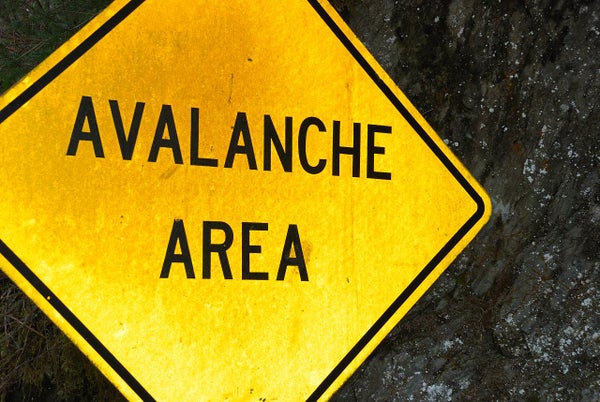This article was published in Scientific American’s former blog network and reflects the views of the author, not necessarily those of Scientific American
In a low-flying helicopter, Gabriel Wolken is scanning the steep hillsides around southeast Alaska with a purpose. A research-grade laser mounted to the helicopter sends rapid pulses of light from the aircraft to the ground to measure the elevation of trees and the bare earth below. Like a price scanner registering elevation instead of barcodes, it compiles a detailed map of the features of the landscape—information that will be needed to determine snow depth from the air come winter.
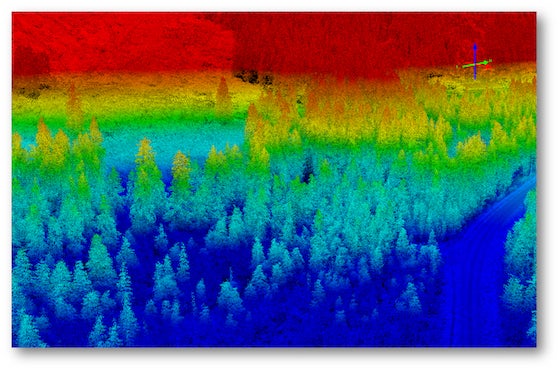
The result of laser-scanning methods used to map tree and bare ground elevation at Snowslide Gulch at the Kensington Mine in September 2019. This remote sensing method is known as Light Detection and Ranging, or LIDAR. Credit: Gabriel Wolken
Understanding snow patterns is a crucial part of Wolken’s work with the Alaska Climate Adaptation Science Center, the State of Alaska Division of Geological and Geophysical Surveys and local partners to model avalanches past and future at sites around Alaska. Nowhere is this work more important than in the capital city of Juneau, which has the highest urban avalanche potential of any city in the country. Throughout southeast Alaska, steep topography and heavy winter snowfall can combine to create dangerous avalanche conditions. In Juneau, the risk of avalanches extends to residential neighborhoods, a harbor and major roadway, and the powerlines that connect to Juneau’s main hydroelectric power plant.
On supporting science journalism
If you're enjoying this article, consider supporting our award-winning journalism by subscribing. By purchasing a subscription you are helping to ensure the future of impactful stories about the discoveries and ideas shaping our world today.
Despite Juneau’s susceptibility to avalanches, relatively little is known about the city’s long-term avalanche history. But there’s a feature on the landscape that remains to document events after avalanche debris has melted away—the hardy hemlock, spruce and cedar trees found in and bordering local avalanche paths have weathered decades, and in some cases centuries, of slides. This summer, University of Alaska Southeast professor Eran Hood, along with Wolken and Erich Peitzsch from the U.S. Geological Survey (USGS) led a team of researchers through seven major avalanche paths near key recreation and infrastructure sites in Juneau to collect samples of wood from trees impacted by avalanches.
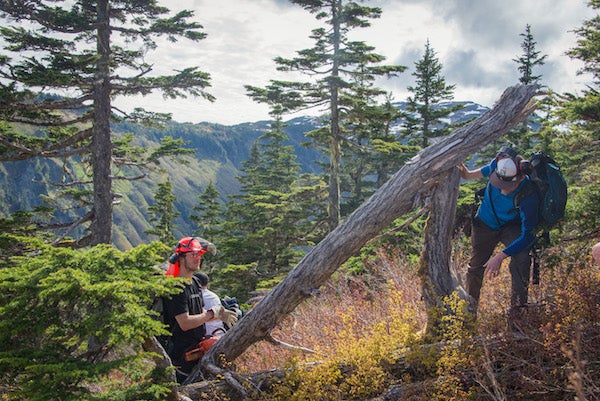
Mckenzie Wilson (left ) and Eran Hood examine a downed tree in an avalanche path near Juneau’s Eaglecrest Ski Area. Credit: Molly Tankersley
Written into the annual growth marked by tree rings are records of the avalanche events that each tree lived through. As the tree continues to grow after an impact from avalanche debris, its attempts to heal and stabilize itself are recorded as scars on the ring that can also be accompanied by dark, asymmetrical rings known as reaction wood. By studying these patterns in the wood and carefully and statistically dating these rings and events, a field known as dendrochronology, scientists can build a historic record of large magnitude avalanche events for an area.
The team harvested sections of wood in flat, circular disks referred to as “cookies” from downed and dead trees in areas of substantial avalanche activity. Sanded down to create a smooth surface and carefully labeled, the cookies are then flown a few thousand miles away to the USGS Northern Rocky Mountain Science Center, where USGS researcher Danny Stahle will analyze the rings under a microscope. The records traced in the wood can span as long as 300 years. One sample shared by Hood from this summer marked an avalanche event in 1818 (Figure 2).
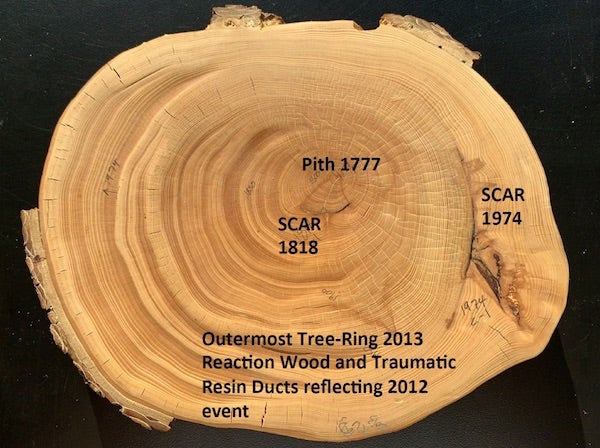
FigA tree cross-section from one of the avalanche paths around Juneau showing scars from avalanche events in 1818, 1974, and 2012. Credit: Daniel Stahle
The extent of damage to trees throughout Juneau’s history can tell us about the relative magnitude, frequency and spatial extent of avalanches that create these wounds in the forest. In the hundreds of wood samples collected this summer, Stahle is searching for patterns that indicate prominent avalanche years, where trees within an avalanche path and across all seven study sites display signs of disturbance. In addition to tracking how frequently large avalanches occur, they are also looking to draw parallels between avalanche activity and atmospheric circulation patterns such as the Pacific Decadal Oscillation or El Niño and La Niña.
“Tree rings survive to pass on specific information that’s helpful for modeling avalanches but also for regional information that can help us understand the general relationship between climate and avalanches in southeast Alaska,” says Hood.
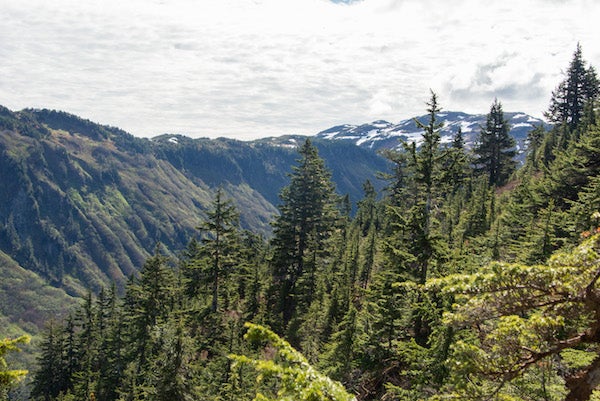
Eaglecrest. Credit: Molly Tankersley
Using data from the tree ring study and the snow depth surveys he is conducting by helicopter, Wolken is creating computer simulations of historic avalanche events to better understand the movement and distribution of snow in the study sites. By modeling past events and studying the return periods for large magnitude avalanches, the research team will be able to predict the debris hazard zones for events that occur every 10, 30, 50 years, and beyond. This is vital information for Eaglecrest Ski Area, the Kensington Mine, the Snettisham hydroelectric power plant, and the City and Borough of Juneau, which are all impacted by major avalanche paths included in the study.
The local-scale avalanche models will also help improve regional modeling and hazard maps for the state, which are crucial for infrastructure development planning, emergency response resources, and community access to subsistence or outdoor recreation sites throughout Alaska.
Given the rapid changes to the climate and snowpack in Alaska, it’s increasingly important to understand avalanche risk. “Once we have that baseline established, with the help of the historic context from the dendrochronology, then we can start to consider what changes in climate might do to the avalanche severity and Alaska's vulnerability to avalanches in the future as the climate continues to change,” says Wolken.
Looking ahead, Hood, Wolken and their USGS partners are also interested in using the historical avalanche data to investigate how avalanches impact wildlife habitat and forest structure.
